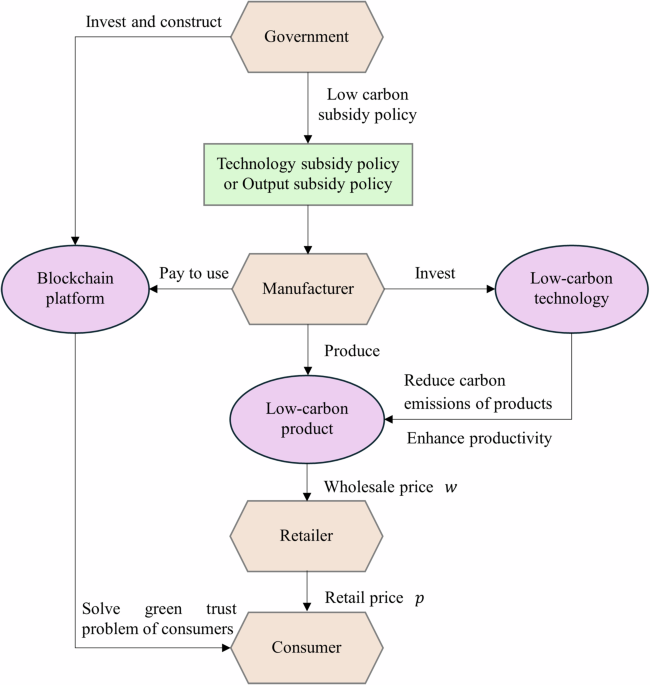Blockchain Technology Explained: Benefits & Applications

Over a third (38%) of US workers said that blockchain technology is widely used within their businesses, according to a February 2023 survey by EY. Another 44% said the tech would be widely used within three years, while 18% reported it was still more than three years away from being widely used within their business.
Increased adoption of blockchain requires an understanding of what the technology is, how it works, and the benefits it provides across industries, including financial services, retail, advertising and marketing, and digital health.
Blockchain is a tamper-proof, sequential ledger based on cryptographic principles. It’s designed to create trust in the timeliness, accuracy, security, and speed of transactions.
A blockchain arranges its entries sequentially; each entry includes encryption of new data, which is merged with the encryption of the prior entry. The joint encryption of those two entries then becomes the first part of the subsequent entry. This sequential coding provides a high level of security and time-stamping. Data is typically encrypted using hash codes, and value is stored as digital tokens.
Blockchain is a secure, transparent, and efficient way to share data across multiple parties.
- Blockchain cannot be altered or reversed, which means participants can trust the data that they are presented with.
- In addition, blockchain’s confidential nature protects users from identity theft, making it attractive to consumers and businesses alike.
- Blockchain enables businesses to transact in real time at any hour of the day, any day of the year. This is a contrast from bank transfers and payments that are only available during business hours and have cutoff times.
- Blockchain also lowers costs for businesses, especially those that have high-value, high-volume transactions that cause fees to add up.
- Want to learn more about blockchain and other finance trends? Sign up for the Banking & Payments newsletter.
Blockchain’s potential use cases span across industries, including financial services, retail, marketing and advertising, and healthcare. Here are some examples:
- In financial services, blockchain increases settlement speed to real time (eliminating exchange rate risk for cross-currency transactions) and enables real-time transactions. It also has applications for simplifying operations, such as tracing bank guarantees and letters of credit across parties and executing smart contracts, making reporting faster and automating compliance.
- Blockchain powers cryptocurrencies, which are digital currencies that are maintained by a decentralized system, resulting in cheaper and faster transactions.
- Retailers are using NFTs, which are digital assets that sit on a blockchain, to engage with their tech-savvy customers and brand enthusiasts who want exclusive merch or experiences.
- Luxury resale retailers are also using blockchain to certify the authenticity of their products and make the transfer of ownership more transparent.
- In marketing, blockchain can be used to increase the security and transparency around the sharing of customer data, either between a customer and a company or between two companies.
- Blockchain can also be used to reduce fraud and other trust-related issues in digital ad buying.
- Blockchain has a wide range of applications in healthcare, including improving payment processing, electronic medical records, provider directories, and data security and exchange.
Blockchain is the basis for the next phase of the internet called Web3. Companies like JPMorgan Chase, IBM, and Google are building teams to explore the future of the technology. But its technical complexity and upfront investment create barriers to adoption for many organizations.
What role does blockchain play in Web3?
Web3 is a new iteration of the internet built on decentralized blockchain networks and operated by multiple players instead of being controlled by central authorities like Google or Microsoft. This gives users greater control over their personal data. However, Web3 access requires crypto wallet usage, blurring the lines between each space.
In the Tech Trends to Watch for 2023 report, EMARKETER predicted that companies will use Web3 to provide new benefits for loyalty programs or new ways to activate them.
What are some examples of blockchain technology across industries?
- JPMorgan has formed a team within its Onyx unit that will develop and commercialize new blockchain-based solutions.
- Bitcoin is one of the top cryptocurrency providers, which use blockchain technology to operate.
- Luxury retail brands like Tiffany & Co., Dolce & Gabbana, and Gucci have experimented with NFT projects. Nike even acquired NFT company RTFKT in 2021.
- Healthcare giants Humana, MultiPlan, and UnitedHealth Group formed Synaptic Health Alliance, a venture that explores blockchain tech applications in healthcare and has worked on a blockchain-enabled provider directory solution.
- IBM and Mediaocean launched a blockchain consortium in 2020 for the digital media supply chain, bringing together advertisers, agencies, and publishers.
- Google has also reportedly created a new unit in 2022 dedicated to “blockchain and other next-gen distributed computing and data storage technologies.”
What are the barriers to blockchain adoption?
Blockchain’s technical complexity is one of the technology’s main challenges. It requires an upfront investment in time, talent, and resources, which can be daunting for some companies. In addition, there are still concerns about the security and privacy of blockchain data.
link






